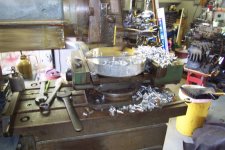crossthread
Titanium
- Joined
- Aug 5, 2004
- Location
- Richmond,VA,USA
I got into a discussion recently with a friend who wanted me to "plane" a part for his steam engine. Being the pedantic type, he informed me that if the part was stationary with the cutting tool passing back and forth over the stock, it was referred to as shaping not planing. If the cutting tool is stationary and the stock moves back and forth, it is in fact planing. I told him it didn't matter one way or the other and he informed me that I was too old to learn anything. Is he correct (not about me being too old to learn anything)?




